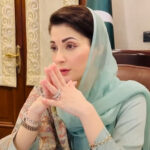FAISALABAD, May 28 (APP): Amidst ongoing economic recession and population hovering around 230 million, the country direly needs to promote revenue-earning sectors like agriculture and textile industry.
As Pakistan was in urgent need of foreign exchange to stabilize its economy, textile promotion and subsequently enhancing exports of agriculture and textile item can help a lot in employment generation as well as socio-economic uplift of the people.
Once known as the backbone of the national economy, the textile sector of Pakistan in recent decades declined due to multiple reasons including global and domestic inflation, rise in cost coupled with the inability of industrialists to upgrade their units and produce innovative products.
There was a time when Pakistan was the second most dependent country on textile with respect to exports after Bangladesh due to high global demand and availability of raw material in abundance but these exports witnessed a prominent decline in recent years. The share of textile exports also declined to 45 percent of the total exports of the country from 65 percent.
Industrialists are most of the time making their industrial products “Cheap, not Unique”, thus creating a vacuum where unique and quality products of other countries are making way to the international market. Lack of innovation, product diversification, value addition, low productivity and high cost are also some of the main reasons for the collapse of the textile industry.
“Our industrialists lack innovations and in most cases, small power loom owners were using the looms manufactured in 2000,” said Engineer Dr Yasir Nawab, Dean Faculty of School of Engineering and Technology, National Textile University Faisalabad.
“Exporters here have replenished machinery and started producing and exporting value-added products with some working as vendor for globally known textile brands,” he added.
He informed that National Textile University Faisalabad (NTUF) had launched a project to facilitate Pakistani industrialists switch over to the knowledge-based textile industry for sustainable enhancement of exports.
“Although, the government is doling out various incentives to promote the export-oriented sector but local sector still remains a prey to inflation, high electricity tariff and enhanced taxes,” Dr Yasir Nawab said.
He said the local industry which was a mainstay for a vast number of population was struggling hard to survive due to reasons like the use of obsolete technology, increase in cotton rate, thread price and labor cost.
The role of the textile sector is deep-rooted in Pakistan’s economy since 1958 when multiple hydel power projects were completed and cheap electricity was available to this sector to explore textile-oriented agricultural products potential of southern Punjab and Sindh – the areas most suitable areas for cotton cultivation.
NIAB-78 revolutionized the cotton yield and this variety developed by Nuclear Institute for Agriculture and Biology (NIAB) dominated the cotton varieties for more than two decades till the outbreak of Cotton Leaf Curl Virus (CLVC).
An official of NIAB said that NIAB-78 alone had returned Pakistan what was spent on NIAB since its inception.
“No doubt the yield of NIAB-78 was almost tripled and Pakistan harvested a record bumper crop of 14 million bales after which its decline started that still goes on with its production dwindling to only six million bales,” he said.
He said that globally more than 200 textile products were exported from one country to another but our export was restricted to only 12 to 14 products. “As the volume of international textile exports in the global economy is around one trillion dollars, our share in this sector is quite negligible.”
The spokesman said Pakistan’s exports were mainly concentrated in the USA and European Union. “We are not tapping the markets like Japan, Russia, Korea, Mexico, Switzerland, etc. which are importing more than US$100 billion of textiles and clothing. Therefore, we need to adopt an aggressive strategy to capture these markets.”
According to a spokesman of Pakistan Textile Exporters Association (PTEA), the textile sector was at the verge of collapse and both the government and industrialists were to be blamed for it.
He said Korea and Vietnam had entered into the high-tech textile but we were still beating about the bushes.
“Bangladesh is most efficient as it has utilized skills of our entrepreneurs and now this country is earning hundred billion dollars from textile exports despite the fact that it has to import 100 percent raw material from the other countries,” he said.
According to Dr. Khurram Tariq, President Faisalabad Chamber of Commerce and Industry (FCCI), the World Bank has reported that Pakistan’s textile sector is fully competent to enhance its exports to $ 50 billion if equal opportunities and a level playing field are provided.
“Both the government and the private sector must buttress efforts to fully utilize this potential to revive the national economy and put it on strong footing,” he said.
He also pleaded to ensure political stability for strengthening the economy as the uncertain and volatile situation not only affects investment but also economic activity in the country.
“We need multi-pronged policies to promote export-oriented industry also ensuring quality seeds and cheaper inputs for agriculture and reducing the cost of production for textile and other exporting sectors,” Dr Khurram said.
“Our measures must also focus on the provision of sufficient raw material for industrial revival paving the way for local employment generation as well as earning foreign exchange through exports,” he remarked.







